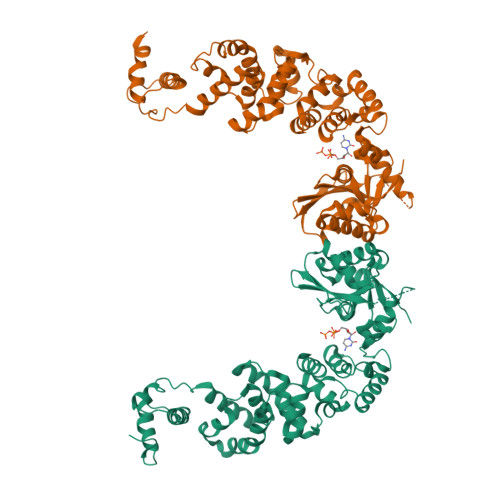Mechanism for the definition of elongation and termination by the class II CCA-adding enzyme
Toh, Y., Takeshita, D., Numata, T., Fukai, S., Nureki, O., Tomita, K.(2009) EMBO J 28: 3353-3365
- PubMed: 19745807
- DOI: https://doi.org/10.1038/emboj.2009.260
- Primary Citation of Related Structures:
3H37, 3H38, 3H39, 3H3A - PubMed Abstract:
The CCA-adding enzyme synthesizes the CCA sequence at the 3' end of tRNA without a nucleic acid template. The crystal structures of class II Thermotoga maritima CCA-adding enzyme and its complexes with CTP or ATP were determined. The structure-based replacement of both the catalytic heads and nucleobase-interacting neck domains of the phylogenetically closely related Aquifex aeolicus A-adding enzyme by the corresponding domains of the T. maritima CCA-adding enzyme allowed the A-adding enzyme to add CCA in vivo and in vitro. However, the replacement of only the catalytic head domain did not allow the A-adding enzyme to add CCA, and the enzyme exhibited (A, C)-adding activity. We identified the region in the neck domain that prevents (A, C)-adding activity and defines the number of nucleotide incorporations and the specificity for correct CCA addition. We also identified the region in the head domain that defines the terminal A addition after CC addition. The results collectively suggest that, in the class II CCA-adding enzyme, the head and neck domains collaboratively and dynamically define the number of nucleotide additions and the specificity of nucleotide selection.
Organizational Affiliation:
Institute for Biological Resources and Functions, National Institute of Advanced Industrial Science and Technology (AIST), Higashi, Tsukuba-shi, Ibaraki, Japan.





















